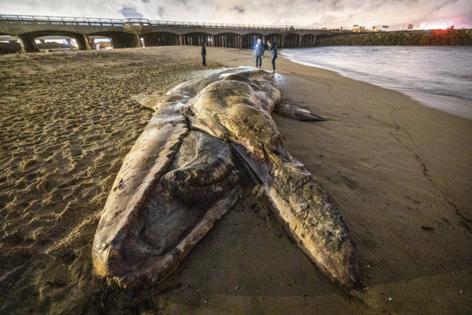The gray whale die-off on West Coast is over, NOAA declares
Published in Science & Technology News
The "unusual mortality event" that led to hundreds of gray whale carcasses washing up on the West Coast shoreline has ended, researchers say. The cause: too little food available along its epic migratory route.
Between 2018 and 2023, carcasses of eastern North Pacific gray whales washed up on coasts from California to Alaska, with the highest number of whales stranded between December 2018 and December 2020.
The National Oceanic and Atmospheric Administration, in consultation with the Working Group on Marine Mammal Unusual Mortality Events, opened its investigation into the unusual mortality event in 2019. Such an event, defined as an unexpected and significant die-off of any marine mammal population, requires immediate response under the Marine Mammal Protection Act.
In this case, the whale population and calf production showed significant signs of decline.
NOAA Fisheries — the agency responsible for stewarding ocean resources — and its partners determined that 690 gray whales washed ashore from 2018 to 2023: 347 in the United States, 316 in Mexico and 27 in Canada.
This contributed to the decline in the gray whale population to 14,526 in 2023 from 20,500 in 2019, NOAA said, amounting to a roughly 30% drop. Calf production totaled an estimated 217 in 2022, down from about 950 in 2018.
There are promising signs of repopulation, said Michael Milstein, a spokesman for NOAA. These include "the near-doubling of the number of calves counted migrating north with their mothers" last year.
The investigation found that the preliminary cause of the event was a number of changes in the local ecosystem, including changes to the sea ice cover and the supply of small organisms on the sea floor that the whales consume.
"Often they feed by diving to the bottom and sifting big gulps of sediment through their baleen, consuming the amphipods in great numbers," Milstein said.
The whales migrate in the spring from the warm waters of Mexico's Baja peninsula to the icy waters of the Arctic and sub-Arctic, where they feed until they return to Mexico in the fall to birth their calves.
...continued
©2024 Los Angeles Times. Visit at latimes.com. Distributed by Tribune Content Agency, LLC.







Comments